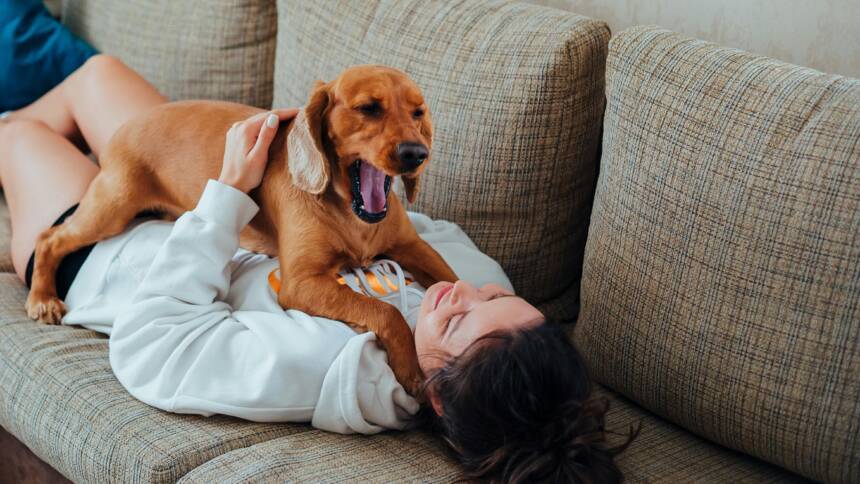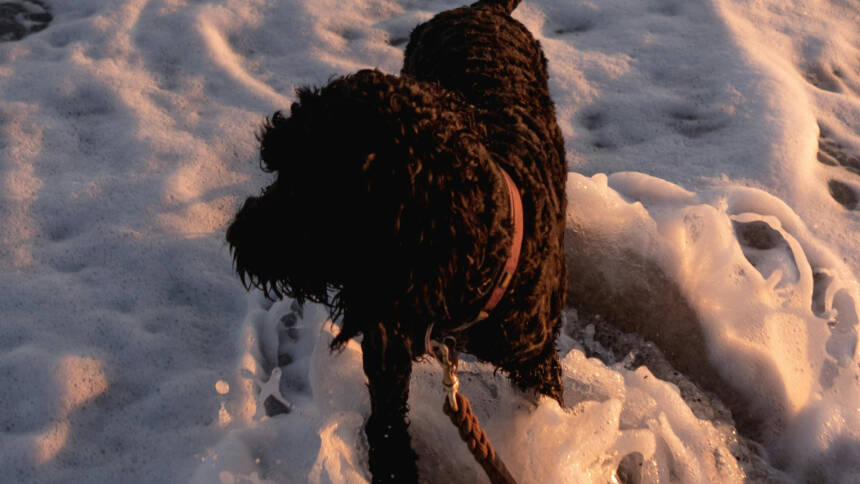When a dog develops an abscess— a localized pocket of infection typically filled with pus—pet owners often become concerned about the healing process. An abscess can arise from a variety of causes, such as bites, puncture wounds or as a complication from a foreign body entering the skin. The healing time for an abscess in dogs depends on factors like the severity, location, and treatment method, but generally, it can range from a week to several weeks.
The body’s response to infection and the subsequent care provided are vital to recovery. Immediate and appropriate treatment, often beginning with drainage and followed by antibiotic therapy, is crucial to prevent complications and speed up healing. Consistent monitoring and care, including keeping the area clean and possibly the application of warm compresses, help to ensure the wound heals properly and reinfection is avoided.
Recovery time also varies depending on whether the abscess was managed at home or required veterinary intervention such as surgical drainage or tooth extraction. In cases where a dog’s immune response is strong and the abscess is efficiently managed, healing can occur relatively quickly. However, for more severe cases or if treatment is delayed, the healing process may extend to several weeks. Regular veterinary check-ups during the healing period can help assess progress and adjust treatment as necessary, ensuring the best possible outcome.
Understanding Dog Abscesses
In the context of canine health, abscesses are a significant concern characterized by localized collections of pus that can form in various parts of a dog’s body due to bacterial infections or foreign objects under the skin.
Types of Abscesses
Tooth Root Abscesses: These occur near the root of a tooth and can be significantly painful for the dog.
Anal Gland Abscesses: Often found near the anal glands, these can become very uncomfortable and might lead to complications if not treated promptly.
Skin Abscesses: These are pockets of pus that develop under the skin because of penetrating wounds, commonly filled with bacteria and dead white blood cells.
Common Causes
- Wounds: Cuts, bites, or punctures can introduce bacteria into the tissue, leading to abscess formation.
- Foreign Objects: Items such as splinters can become embedded under the skin, providing a breeding ground for bacteria.
- Anal Gland Issues: Blockages in the anal glands can lead to infections and abscesses.
Identifying Symptoms
- Swelling or Lumps: A clear sign of an abscess is usually a swollen area that may feel hot and could be painful when touched.
- Pain and Discomfort: Dogs may show signs of pain by whining, limping, or showing reluctance to be touched.
- Discharge: There may be a presence of pus draining from the wound. It’s typically thick, white, yellow, or greenish in color.
- General Malaise: Signs such as fever, lethargy, and decreased appetite can indicate a more systemic infection.
Understanding these aspects of dog abscesses allows owners to seek timely veterinary care, reducing the risk of complications and ensuring a smoother healing process.
The Healing Process
The healing process for a dog’s abscess is a systematic and biological response involving multiple stages and factors like the immune system’s efficacy and the severity of the infection.
Stages of Healing
The healing process can be segmented into specific stages that are essential for recovery:
- Inflammation Phase: Initially, the body reacts to the presence of bacteria by increasing blood flow to the area, causing redness and swelling. White blood cells are dispatched to fight the infection, which may result in fever as part of the immune response.
- Proliferative Phase: During this phase, new tissues form over the wound, which may be accompanied by a visible scar. The concerted effort of the immune system and cell regeneration is vital here to protect against reinfection.
- Maturation Phase: This final phase is marked by the strengthening of the new tissue, and the scar tissue remodels itself to become more similar to the original tissue. Redness and swelling should subside as the immune system successfully overcomes infection.
Expected Recovery Time
The recovery time from an abscess in a dog can be quite variable but generally follows these timelines:
- Immediate Care: Treatment should start immediately upon discovery of an abscess to ensure expedited healing and to prevent systemic infection.
- Antibiotic Treatment: Post-drainage or surgical intervention, a typical course of antibiotics lasts from 7 to 14 days, depending on the severity of the infection.
Note: These timelines serve as a general guide, and the specific recovery of an individual dog may differ. Regular veterinary check-ups are recommended to assess healing progress and to modify treatment plans if necessary.
Treatment Options
When addressing the treatment of abscesses in dogs, one can consider immediate first aid, professional veterinary procedures, and ongoing home care. Each approach is crucial for a full recovery and involves specific steps from initial care to the healing phase.
First Aid Measures
- Initial Cleaning: If an abscess is identified, cleaning the area with a mild antiseptic solution can help prevent further infection.
- Warm Compresses: Applying warm compresses to the affected area several times a day can encourage drainage and provide comfort.
Veterinary Procedures
- Examination and Diagnosis: A veterinarian will assess the abscess to determine the appropriate course of treatment.
- Antibiotics: In many cases, the treatment involves prescribing antibiotics to fight infection.
- Drainage or Lancing: If an abscess is closed, a vet may lance it to allow pus to escape, followed by drainage to keep the area clear.
- Surgery: Severe or deep abscesses may require surgical removal or more extensive surgical intervention.
Home Care and Monitoring
- Medication Administration: Owners must administer all prescribed antibiotics as directed by the vet to ensure effectiveness.
- Regular Cleaning: Keeping the abscess site clean post-procedure is essential. It can involve gentle cleaning with antiseptic solutions and fresh dressings if needed.
- Monitoring: Continuous monitoring of the abscess site for signs of healing or any indication of worsening is critical in the recovery process. Any changes should be reported to a veterinarian.
Potential Complications

In the healing process of a dog’s abscess, various complications can arise, primarily from infection, delays in seeking veterinary help, or repeated incidents of abscess formation.
Signs of Infection
An abscess itself is a pocket of pus that forms as a result of infection. The presence of pus, however, can lead to systemic effects. Owners should scrutinize the abscess for signs that the infection is worsening, such as:
- Increasing size or redness around the area
- Foul odor emanating from the abscess
- Discharge that is yellowish-green or bloody in appearance
- The dog becoming lethargic or displaying a painful response when the area is touched
When to Seek Further Help
Immediate veterinary attention is crucial if the dog:
- Develops a fever, indicative of the body fighting an infection
- Exhibits a reduced appetite or shows signs of depression
- Has an abscess that ruptures, which may appear as an open wound draining pus
- Appears increasingly painful despite treatment or if the abscess does not improve
Dealing With Recurrence
Abscesses may recur, particularly if underlying issues are not addressed. Steps to minimize recurrence include:
- Regular cleaning of any wounds and keeping the dog’s environment free of hazards
- Monitoring for any new swellings or changes to existing wounds
- Ensuring the full course of any antibiotic treatment is completed to prevent the return of the infection
Preventative Measures

Prevention of abscesses in dogs is anchored in two main strategies: regular health assessments and meticulous wound care.
Importance of Regular Check-Ups
Regular vet check-ups are essential for early detection of wounds or conditions that may lead to abscess formation. During these check-ups, a veterinarian can examine the dog for any signs of injury, provide necessary vaccinations to prevent bacterial infections, and offer advice on maintaining overall health through proper nutrition and grooming.
- Health Screening: Yearly examinations to catch potential problems early.
- Vaccinations: Up-to-date vaccinations to prevent diseases that can cause infections.
Effective Wound Management
When a dog sustains an injury, prompt and effective wound management can drastically reduce the risk of abscess development. This includes:
- Immediate Cleaning: Gently washing any cuts or wounds with saline to remove debris and bacteria.
- Grooming: Maintaining a clean coat to prevent the accumulation of dirt and bacteria, especially around existing wounds.
- Monitoring: Regularly checking the wound for signs of infection such as redness, swelling, or discharge.
It is vital that any significant wounds or those showing signs of infection receive veterinary attention as home care may not be sufficient in all cases.
Post-Treatment Care
After a dog’s abscess has been treated by a vet, proper post-treatment care is essential to ensure a full recovery. This involves managing the dog’s pain, keeping up with follow-up veterinarian appointments, and maintaining good hygiene throughout the healing process.
Pain Management and Relief
Proper pain management is crucial for a dog’s comfort and recovery. The veterinarian may prescribe pain relievers to help ease any discomfort. It’s important to administer all medications as directed. Some dogs may require an Elizabethan collar to prevent them from licking or biting the healing abscess, which can exacerbate the pain.
Follow-Up With Your Vet
Regular follow-up visits to the veterinarian are important to monitor the healing process. The vet may need to re-check the abscess site, ensure it’s being drained properly, and adjust antibiotics if necessary. These visits are a safeguard against complications and help ensure that the healing is on track.
Maintaining Hygiene
Keeping the abscess area clean is essential to prevent infection. The site should be gently cleaned with a saline solution as recommended by the vet. Additionally, the dog’s living space should be kept clean to minimize the risk of re-infection. Caregivers should also ensure their hands are sterilized when treating the wound or administering medication.
Understanding Bacteria in Abscesses

When discussing abscesses in dogs, it’s essential to recognize the pivotal role bacteria play in both the formation and healing of these pockets of pus.
Common Bacterial Strains
There are a multitude of bacterial strains that can be involved in the formation of abscesses in dogs. Some of the most commonly isolated strains include:
- Staphylococcus intermedius: Frequently associated with skin and soft tissue infections.
- Pseudomonas spp.: Known for its antibiotic-resistant properties.
- Escherichia coli (E. coli): Often found in abscesses due to its prevalence in the environment.
- Pasteurella multocida: Typically involved in infections from animal bites or scratches.
- Actinomyces spp.: A type of bacteria that can cause chronic conditions due to its slow-growing nature.
- Bartonella spp.: Commonly transmitted through fleas or ticks and can cause various infections.
- Nocardia spp.: A bacterium that can cause deep-seated infections, often in immunocompromised dogs.
- Mycoplasma spp.: Lacks a rigid cell wall, which makes it unique and challenging to treat.
Other strains such as Bacteroides, Clostridium, Fusobacterium, and others can also play a role in abscess development depending on the location and cause of the infection.
Role of Bacteria in Healing
The role of bacteria in the healing process of a dog’s abscess is multifaceted:
- Initiation of the Immune Response: Bacteria in an abscess signal the dog’s immune system to respond, which is instrumental in the formation of pus and the containment of the infection.
- Determining the Healing Timeline: The specific bacteria involved can influence how long healing takes. Some bacteria, like Pseudomonas, are resistant to antibiotics, which can prolong treatment.
- Impacting Treatment Strategies: Identifying the bacterial strains can guide veterinarians in selecting the most effective antibiotics to resolve the infection and promote healing.
Effective treatment and healing depend on the timely and accurate identification of the bacterial strains involved in an abscess, as well as an understanding of their individual characteristics and susceptibilities to antibiotics.
When to Involve a Veterinarian
When a dog has an abscess, veterinary involvement is crucial for accurate diagnosis and to navigate the range of available treatment options safely.
Diagnosis and Assessment
Vet Check-ups: Regular veterinary check-ups are essential in identifying and assessing an abscess. The vet will evaluate the severity of the condition and determine the presence of a fever which can indicate systemic infection.
- Diagnostic Tools:
- Physical Examination
- Ultrasound or X-Rays (if needed)
Sedation or General Anesthesia: Complex or painful abscesses may require sedation or general anesthesia to allow for a thorough examination or treatment without causing undue stress or pain to the dog.
Professional Treatment Options
Veterinary Attention:
- Antibiotics to combat infection
- Pain management for comfort during recovery
Anesthesia: In some cases, the vet may need to administer anesthesia to surgically drain the abscess and clean the wound under sterile conditions. They will assess the dog’s overall health to determine the safest anesthesia protocol.








